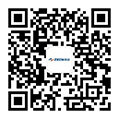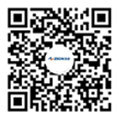Qingdao accelerates the layout of low-altitude economy "new infrastructure"
Release Time:
2025-06-22
During the recent 6th Qingdao Summit of Multinational Corporations Leaders, an exhibition on general aviation and low-altitude economy attracted widespread attention. As one of the earliest companies in China to focus on the low-altitude field, Qingdao YunShiji Information Technology Co., Ltd. showcased its independently developed "YouXiaoZhan" system at the exhibition. This unmanned aerial vehicle (UAV) automatic airport integrates eight major system modules, including unattended operation and intelligent dispatch. It maintains excellent operational performance even in high-temperature and high-humidity weather, adapting to various complex outdoor environments in multiple regions. After deployment, it can replace manual operation of UAVs for outdoor tasks, serving city-level low-altitude government affairs perception applications and achieving "true unmanned" operation.
Qingdao Daily/Guanhai News reporter Zhou Jianliang
During the recently held 6th Qingdao Summit for Leaders of Multinational Corporations, an exhibition on general aviation and low-altitude economy attracted widespread attention. As one of the earliest companies in China to focus on the low-altitude field, Qingdao YunShiji Information Technology Co., Ltd. showcased its independently developed "You Xiaozhan" system at the exhibition. This unmanned aerial vehicle (UAV) automatic airport integrates eight system modules, including unattended operation and intelligent dispatch. It maintains excellent operational performance even in high-temperature and high-humidity weather, adapting to various complex outdoor environments in multiple regions. After deployment, it can replace manual operation of UAVs for outdoor tasks, serving city-level low-altitude government affairs perception applications to achieve "true unmanned" operation.
Since its deployment in Laoshan District, "You Xiaozhan" has accumulated over 16,000 flights with a total flight time exceeding 200,000 minutes. Practical testing has shown that compared to traditional operation methods, costs are reduced by about 50%, and efficiency is increased by more than 10 times compared to manual UAV operation. This brings a new revolution in productivity to application scenarios in smart cities, urban governance, public safety, and emergency command. Currently, "You Xiaozhan" has expanded beyond Qingdao, with deployments in Beijing, Guangzhou, and other areas such as Jinan and Dezhou in Shandong Province, becoming a significant innovative exploration in the integrated application of city-level low-altitude government affairs in China.
This is a microcosm of Qingdao's rapid development of low-altitude economy new infrastructure.
Following the development milestone year of 2024, the low-altitude economy sector remains vibrant in 2025. In particular, low-altitude new infrastructure has become a key focus for various regions. More and more cities are incorporating low-altitude facilities into industrial planning and urban renewal, deploying takeoff and landing platforms, communication monitoring, and meteorological networks and systems. They are building "high-speed" networks in the cloud, constructing "sky roads," and establishing "sky nets" to support the development of the low-altitude economy.
What is "low-altitude new infrastructure"? It includes physical infrastructure such as general airports, vertical takeoff and landing sites, UAV nests, charging and swapping stations, and transfer hubs that provide takeoff and landing, energy supply, maintenance, and storage for aircraft; and information infrastructure such as communication (e.g., 5G-A, satellite internet), navigation (e.g., high-precision Beidou positioning), monitoring (e.g., phased array radar, ADS-B), and meteorological warning systems.
As a carrier of low-altitude economic infrastructure, new infrastructure determines the developable dimensions of airspace resources. Its significant value lies in providing sufficient energy supply, extensive communication coverage, efficient low-altitude traffic support, and building the "physical foundation" of a digital sky for the low-altitude economy. A well-developed low-altitude new infrastructure is the cornerstone and guarantee for the take-off of the low-altitude economy, and the key to promoting its scalable, sustainable, and high-quality development.
Embracing the challenge and taking the lead. The "Implementation Plan for Promoting the High-Quality Development of the Low-Altitude Economy in Qingdao" clearly proposes integrating intelligent facilities, improving airspace efficiency, and constructing four networks: a low-altitude flight route network, a low-altitude new facility network, a low-altitude communication and perception network, and a low-altitude supervision and service network, to orderly promote the improvement of low-altitude infrastructure. Today, in Qingdao, as the "four networks" are rapidly being woven, low-altitude new infrastructure is showing a new momentum of blossoming and taking off.
General Airports: Building a Solid Foundation
As the core infrastructure of the low-altitude economy, general airports serve as takeoff and landing platforms for various low-altitude aircraft. Compared to traditional airports, general airports have significantly shorter runways, typically ranging from a few hundred meters to over 1000 meters. General airports not only provide safe and convenient takeoff and landing conditions for low-altitude aircraft but also drive economic development and promote industrial clusters in surrounding areas.
Currently, Qingdao has built four general airports (three Class A: Qingdao Cihang Airport, Qingdao Jimo Airport, Laixi Dianbu Airport; one Class B: Qingdao West Coast Airport), ranking first in the province. Functionally, these four general airports can accommodate various ground takeoff and landing facilities for helicopters and UAVs, providing strong "hardware support" for conducting low-altitude flight operations and expanding flight scale.
Qingdao Cihang Airport opened in July 2020. It has an 800-meter-long and 30-meter-wide runway, and its service radius covers the entire peninsula region. Short-haul transportation can extend across the Bohai Bay to the northeast region. It is the general airport with the largest airspace in East China. With over 50 general aviation companies, it has formed an industrial ecosystem covering pilot training, emergency rescue, and UAV test flights. In May this year, at the signing ceremony and work promotion meeting for the Qingdao Cihang Airport project, representatives from Qingdao Metro Group, Pingdu Holding Group, and Qingdao Aviation Investment Co., Ltd. signed the project agreement. The project will focus on the "hub" goal, accelerate infrastructure construction, and build a strategic fulcrum for the low-altitude economy industry on the peninsula.
From smooth land transportation to opening up air gateways and pursuing dreams in the sky, Laixi focuses on improving the low-altitude industrial ecosystem, efficiently utilizing airspace resources, and relying on Laixi Dianbu Airport to create a development carrier with "strong infrastructure and multiple application scenarios." It actively develops a 10-billion-yuan aviation industry chain integrating aviation education, aviation manufacturing, and general aviation tourism. On January 1 this year, the "Zhejiang Xinchang-Shandong Laixi" low-altitude route was approved. This route is the first inter-provincial low-altitude flight route between the two provinces, with a total length of 1200 kilometers and a one-way journey of about 5.5 hours. It can provide "low-altitude + logistics" and "low-altitude + tourism" services. On March 15, the TP1000 large unmanned transport aircraft successfully completed its maiden flight at Laixi Airport, marking another major breakthrough for China in the field of high-end unmanned aerial vehicles.
In addition to general airports, Qingdao has also deployed 181 fixed and temporary helicopter landing points, 26 professional UAV service stations, and 56 unattended fully automatic airports across the city. Qingdao Iron Tower, relying on the Yin Chuan Road base station tower in Licheng District, has piloted the construction of a UAV automatic nest, exploring new models for UAV takeoff and landing and charging facilities.
Low-Altitude "Neural Center": Achieving "Ten Thousand Takeoffs and Landings"
With the development of the low-altitude economy, low-altitude flight activities are becoming increasingly frequent. However, there are no traffic lights in the air. How can various low-altitude aircraft fly safely and orderly? This poses new challenges to the coordinated development of low-altitude operations: on the one hand, the coordination between different types of UAVs, such as the mixed operation management of various UAVs for logistics, inspection, and emergency response in the same airspace; on the other hand, coordination between different departments and industries, such as cooperation between government departments, enterprises, and social organizations in the use and management of low-altitude resources.
Just as ground transportation requires traffic management, the air also requires a meticulous management system. In this regard, Qingdao has taken a key step. Qingdao Metro, together with China Railway Signal & Communication, a national team in the field of intelligent control, established the Tonghao Qingtie Low-Altitude Transportation (Qingdao) Technology Co., Ltd., dedicated to promoting the construction of a city-level low-altitude flight management service platform. Recently, the Qingdao low-altitude flight supervision and service platform has been deployed, building a safe flight foundation for Qingdao's low-altitude intelligent network.
Currently, the platform has six core functions: safety control, automatic approval of flight plans, full-process operational risk assessment, full-cycle closed-loop traffic management, airspace grid division, and multi-target route planning, meeting the needs of low-altitude flight control. Like the "neural center" of the low-altitude economic ecosystem, the platform extends the concept of rail transit management to the low-altitude field, achieving full-dimensional management of Qingdao's city-wide low-altitude airspace and aircraft activities.
The Qingdao low-altitude flight supervision and service platform has adopted several domestically leading technologies during its deployment. Simultaneously, the platform construction plan boasts a one-stop, low-cost, and highly reliable construction advantage, eliminating the need for supercomputing services. By building a high-performance data cluster to establish a low-altitude control platform, it can achieve "ten thousand take-offs and ten thousand landings."
In terms of information infrastructure, Qingdao Mobile and Qingdao Unicom have launched 5G-A integrated sensing and communication pilot programs. Qingdao City has signed strategic cooperation agreements with China Railway Signal & Communication Co., Ltd. and China Tower Corporation, leveraging their advantages in intelligent operation and control, omnidirectional sensing, and high-point communication station sites to build a coastal and air defense low-altitude system and optimize and improve Qingdao's integrated air-space-ground sensing system.
Scenario Application: Digital Simulation Test Field Creates a New Technological Paradigm
Qingdao's low-altitude airspace is complex, with mountains and seas and diverse terrain, making it highly valuable for setting up low-altitude economic test scenarios. Qingdao also possesses a decommissioned Liuting Airport with complete runways and navigation and monitoring equipment, supporting low-altitude planning and operation simulation experiments. This gives it unique advantages in low-altitude economic scenario application testing.
This has attracted the attention of the national team for aerospace information technology innovation—China Resources Satellite. As early as 2018, China Resources Satellite conducted relevant tests and verifications at Liuting Airport. At the 2025 Star Chart Low-Altitude Cloud Development Conference (Qingdao) held this March, China Resources Satellite Co., Ltd. established China Resources Satellite Low-Altitude Cloud Technology Co., Ltd. (referred to as "Star Chart Low-Altitude Cloud") in Qingdao as its low-altitude economic headquarters, and the Qingdao Liuting Digital Simulation Low-Altitude Test Field was simultaneously signed. This test field, through conducting low-altitude flight simulation verification, prediction assessment, iterative optimization, and comparative analysis, will form "Qingdao standards" in the fields of low-altitude flight supervision and airspace grid division, providing a replicable technological paradigm for national low-altitude infrastructure.
Within a 10-kilometer radius of Liuting Airport, China Resources Satellite has built two vertical takeoff and landing fields. Covering 90% of drone testing needs, it can conduct airworthiness certification and simulated environment testing, addressing the low-altitude experimental test flight needs of research institutions and enterprises. It also has the conditions to support the test flights of medium and large drones. "In the future, we will continue to develop and open more test scenarios." said Chen Wei, chairman of Star Chart Low-Altitude Cloud Company.
Based on the ten-layer data of China Resources Satellite's core product "Star Chart Cloud" and the data supply capacity of space-based satellites, the digital simulation low-altitude test field, supported by a digital earth supercomputer and driven by the G-DGGS and GeoSOT airspace grid division dual engines, will create a digital twin at Liuting Airport, including airspace mapping of meteorological and terrain data. By overlaying real-time drone flight data, it will achieve dynamic airspace modeling, acting as an "algorithm factory" and "rule incubator" for low-altitude economic infrastructure, pushing the industry from "single-scenario pilot testing" to "systematic standard co-construction." For example, this test field can simulate the obstacle avoidance path of drones under extreme weather conditions, optimizing the supervision algorithm before feeding it back to the physical world to reduce trial-and-error costs.
Not only China Resources Satellite, but also more entrants have come to Qingdao, accelerating their entry into the low-altitude economy track—
On June 22, XPeng AeroHT, Asia's largest flying car company, held a cooperation framework signing ceremony with Qingdao Qingtie Low-Altitude Industry Development Co., Ltd., Shandong Island City Wings Low-Altitude Economic Development Co., Ltd., and Shandong Qilu Zhiyi Low-Altitude Economic Development Co., Ltd. at the Qingdao Metro Group. Wang Tan, co-founder and vice president of XPeng AeroHT, introduced that the goal is to build two demonstration points for flying car applications and no less than ten takeoff and landing points. This marks the substantial implementation of the deep collaboration among the parties in the low-altitude economy field. In the future, they will jointly promote the expansion of application scenarios for low-altitude flying cars and cultivate new industries such as "low-altitude + tourism."
From the planar transportation of the carriage era and the road network expansion of the automobile era to the three-dimensional layering of the low-altitude era, every innovation and iteration of transportation tools has the potential to reshape the urban form. With the continuous advancement of low-altitude new infrastructure, a more three-dimensional, efficient, and intelligent new urban landscape is taking shape.
Download
No attachments available for download at the moment
BLOGS
On the path of ZECN, we're grateful for you.
ZECN is grateful for the presence of each and every “you,” making ordinary days shine through solidarity, burn with dedication, and grow warm through companionship.
Today, as digital transformation and the rule of law increasingly converge, law enforcement is undergoing a paradigm shift—from being "experience-driven" to "data-driven." As a leading enterprise in portable smart visual terminals with 17 years of deep industry expertise, ZECN Zhiye remains at the forefront of innovation. By integrating cutting-edge technologies such as 5G/4G communication, AI-powered intelligence, and Beidou’s precise positioning, ZECN Zhiye has introduced an integrated solution that combines intelligent law enforcement recorders with a converged communications platform for visualized command and dispatch. This innovative approach builds a comprehensive执法 ecosystem—encompassing "intelligent front-end data collection, seamless mid-end transmission, and advanced back-end visualization and scheduling"—empowering government law enforcement, public safety, and industry management across multiple sectors with unparalleled efficiency and effectiveness.
ZECN Zhiye 5G Law Enforcement Recorder: A Smart Enforcement Solution for Multiple Sectors!
Under the overarching trend of standardizing and智能化 (smartifying) law enforcement and management practices, a robust audio-video recorder—capable of real-time connectivity, intelligent evidence collection, and exceptional reliability and durability—is an essential "hardcore tool" for management across various fields. With 17 years of deep industry expertise, ZECN Zhuye has developed the DSJ-ZEC1NA1 5G Law Enforcement Recorder, which leverages cutting-edge 5G communication, AI intelligence, and military-grade quality to empower government law enforcement, judicial and public services, industry management, and corporate office operations. By driving standardization in enforcement processes and enhancing service efficiency, this innovative technology helps overcome critical operational challenges, laying a solid foundation for digital transformation across diverse sectors.
Ji Ze County Party Secretary Jiao Yaji and his delegation visited ZECN Zhiye for an inspection.
On October 14, 2025, Jiao Yaji, Secretary of the County Party Committee of Jize County, Handan City, Hebei Province, led a delegation to visit and provide guidance at ZECN. During the meeting, both sides engaged in an in-depth exchange centered on the application of smart vision technology and collaborative industrial development.

Addressing the industry's pain points, the ZECN Zhiye PSSR-SCA-ZECNC4 Smart Power Supply Service Recorder has been developed to deliver a comprehensively innovative approach that reshapes the on-site service experience. At the standardized integration level, the device seamlessly aligns with both the GB/T 28181 national standard and the State Grid’s Type B interface specifications, enabling frictionless connectivity with the unified video platform of the power grid. This ensures robust data support for service traceability and quality control, effectively breaking down information silos. Additionally, its standalone Beidou positioning feature guarantees precise identification of work locations, providing reliable spatial reference for emergency repair scheduling and dispatch operations.
On September 19, 2025, the highly anticipated 3rd Smart IoT and Security Technology Application Conference of 2025, along with the 7th Annual Summit for Security Engineering Contractors and System Integrators, was grandly held in Beijing. As a landmark annual event in the industry, this conference brought together renowned security companies, technical experts, and industry leaders from across the country, focusing on cutting-edge smart IoT technologies and emerging trends in security applications, while jointly exploring innovative directions for industry growth. Cao Yongjun, General Manager of ZECN, was invited to attend and deliver a keynote speech.










